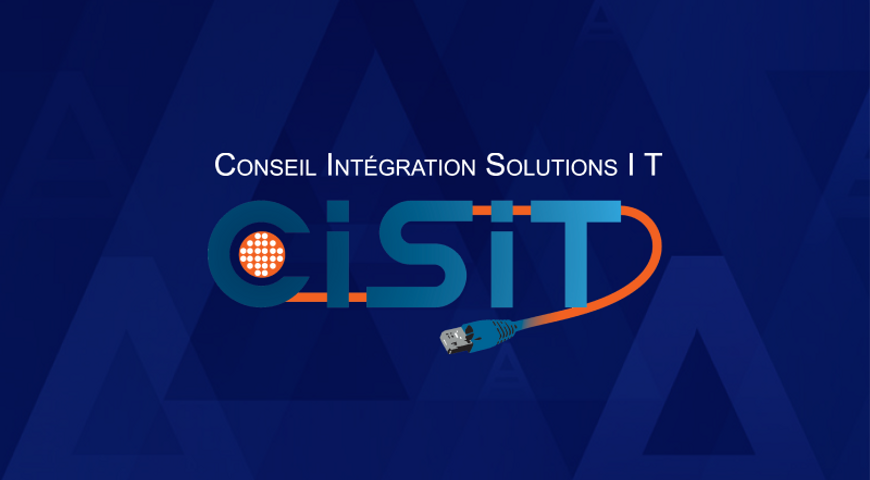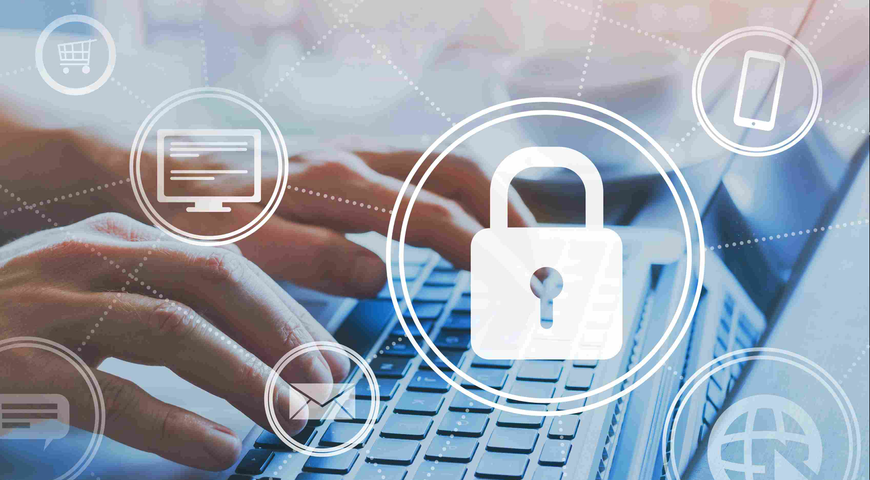Every PC and Mac user should install anti-virus (AV) software. It is an important security measure that protects your data and system from viruses and hacker attacks.
A crashed hard disk often requires effort, time, and additional costs to recover files from a corrupted or lost partition. In this article, we will explore the reasons for a crashed hard drive, the potential fixes for logical errors on the HDD, and how to recover data from crashed hard drives most optimally.

A hard drive crash - Why does it happen?
A crashed hard drive is one of the primary reasons for data loss. More often than not, a corrupted hard drive is not a result of a sophisticated virus attack or a natural disaster striking your PC - it happens naturally over time but is often nudged by human error.
Hard drives are more fragile than you might expect; several moving parts can easily malfunction, leading to a crashed hard disk. For example, they use rapidly rotating disks coated with magnetic material. An actuator arm, with a read/write head attached, is pushed across the disk in tiny increments. The head receives electronic signals and records magnetic impulses in the magnetic coating. Your files live inside the magnetic coating on the surface of the hard disk.
There are many ways paths leading to a hard drive crash.
- Unexpected power failure due to power surges or electrical storms can compromise the hard disk and cause sudden deletion of different file types.
- A manufacturing fault can lead to a broken hard drive without you doing anything wrong.
- Severe damage to the hard disk can lead to broken components and cause a hard disk crash.
- Natural wear to the hard drive can compromise its components and hinder read-write processes.
How can I recover data from a physically damaged hard drive?
Sometimes, a hard drive may suffer from physical damage hindering processes and potentially corrupting data on it. However, physical errors don't necessarily lead to lost data. If the sectors on the drive are still operating adequately, you may not be able to access the drive but still recover data from it.
Typically, hard disk recovery software is the go-to choice for many casual users because search engines are swamped with such solution offers. Let's explore how data recovery software works and why it may not be enough for successful crashed hard drive data recovery.
What is hard drive data recovery software?
Data recovery software aims to scour crashed hard drives, locate recoverable data, piece it back together, and present recovered files in an accessible format. It's possible to salvage accidentally deleted files due to the nature of computer memory.
After you delete a file on your PC or Mac, it goes straight to the Recycle Bin. Even if you empty the Recycle Bin, the file won't be entirely removed. Instead, it remains obscured on your machine, its original file path is removed, and the space it used to occupy is marked as "available" for writing new data. However, if your operating system doesn't use the newly available space to overwrite a new file, the deleted data can stay on your HDD for years. Lastly, physical failure can compromise your hard disk, making data recovery more challenging. Let's explore why that is.
Why using data recovery software isn't enough?
Data recovery software can search and recover data "lost" due to accidental deletion, but retrieving data from a physically damaged hard drive is a more challenging task.
If you have a corrupted hard disk drive on your hands, data recovery software may not be able to access damaged sectors on the HDD. If it can't access the sectors, it won't be able to read hidden data on i. If it can't read the hidden data, it won't be able to piece it back together and restore it in an accessible state. Even if your hard disk drive didn't suffer physical damage, data recovery software may still not retrieve lost files. Let's explore why that is below.
- Data recovery isn't guaranteed
Even the best data recovery program may be inconsistent. The software can scan your damaged hard disk and present a complete list of "found files", ready to be recovered. However, many of them can be empty or contain unusable fragments. If a file is a mere fragment of its original, the tool may recover partial pictures, audio files, or even fragmented documents. Moreover, even the top-rated data recovery service may show inconsistent results over multiple system scans.
Lastly, if you're trying to recover data from a crashed hard disk or the deleted files are overwritten, no recovery software can bring them back. In such cases, the data recovery tool may bring more harm than benefit. Even seasoned users may cause further damage to the hard drive leading to permanent data loss.
An alternative is to employ a data recovery expert. Nonetheless, even data recovery professionals aren't wizards. If sectors on the hard drive are beyond repair, it will cost you a lot of money and time to find out you need to replace the hard drive without retrieving data from it.
- The recovery software is rarely genuinely free
Many data recovery software vendors offer "free" versions of their tools. However, free products rarely pack the required functionalities to recover data from crashed hard drives. Moreover, some solutions may scan the hard disk, present a list of "found files," and prompt you to upgrade your license or purchase a registration key. Others will limit the volume of potentially retrievable files or recover data up to a limit.
- A confusing market
You can find thousands of solutions online labeled as "professional data recovery software"—each offers different capabilities and recovery features. A quick scroll through any top SERP page will likely show several services claiming they are the "#1 Data Recovery Software", meaning they can salvage lost data from any crashed hard drive.
Usually, if you're considering such a service, you're probably already battling with a faulty hard disk. Searching for the "right" tool at this moment can be labeled "reactive" at best. As your data is already exposed to potential corruption, wasting time and effort on finding the "best software" can lead to damage spreading, especially if you're using your primary machine to browse the web.
Moreover, even if you find a solution you deem reliable, it may take hours to retrieve data from a corrupted hard drive (or even fail to); during this time, your hard drive remains exposed to further damage, especially if you lack a reliable backup to restore your data in case the hard drive crashes entirely.
Is it possible to recover data from a crashed hard drive?
A hard drive crash is unpleasant, but it doesn't necessarily mean the end for your important data. Let's explore how HDDs work to understand better how to recover data from crashed hard drives.
How do hard drives operate?
A hard drive consists of storage clusters called "sectors". If a sector on your hard drive is defective, damaged, or corrupted, it can be perceived as a "bad sector". There are two types of bad sectors - hard bad sectors (physical damage) and soft bad sectors (logical damage).

Your hard disk uses sectors to read and write data; a bad sector usually responds inadequately to read or write requests. If, upon accessing your hard drive, you receive an error-correcting code (ECC), this means your operating system is unable to match the sector's contents. This typically points to having a bad sector on your hard drive.
Even if your OS marks the sector as "bad", you can try fixing it if the error is logical. However, if you detect a hard bad sector, trying to fix it can likely result in a crashed hard disk drive. Keep in mind, even if the error is logical, it's critical to back up or clone your hard drive before attempting to fix soft bad sectors.
A reliable backup of all accessible data is crucial because many bad sectors can lead to a corrupted hard drive and affect your entire computer system. If you notice slow-downs, screen freezes, or glitches, these all may point to an impending hard drive crash. If you fail to back up data frequently, a crashed disk may erase it for good.
How to try fixing a logically damaged hard drive
Windows users can avoid a crashed hard drive by fixing soft bad sectors via the following options.
System errors check
To scan the hard disk for system errors:

Defragmenting the HDD
Defragmenting the hard disk on a Windows computer can fix logical issues. However, defragmentation is tough on an SSD's lifespan, so it's best to only use this approach for HDDs.
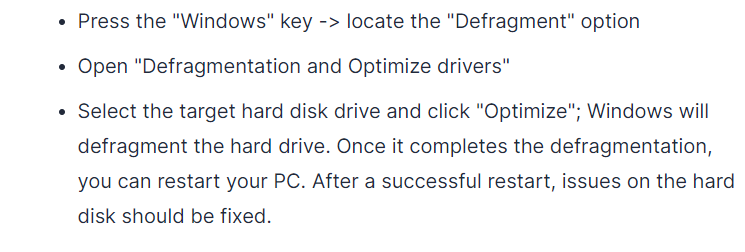
Windows PowerShell
To use Windows PowerShell, follow these steps:
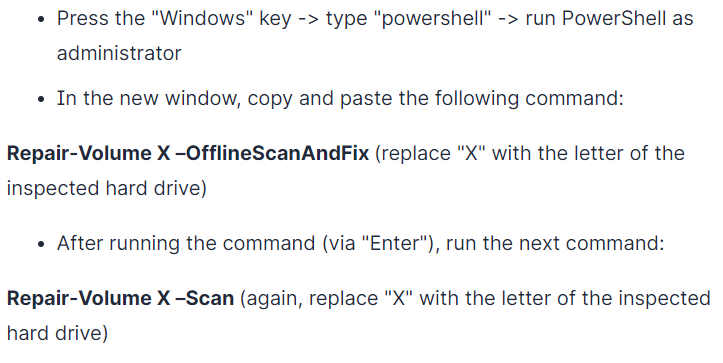
When PowerShell completes the repair process, restart your computer and check if the corrupted hard drive is fixed.
Recovery troubleshooting
If you see one of the following messages during Windows boot - "Windows detected a hard disk problem" or "Repairing disk errors" - you can go for a Recovery troubleshooting.
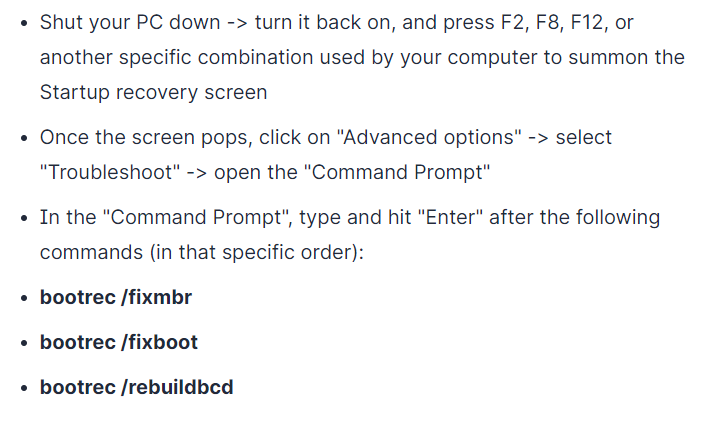
After execution, restart the PC to check if issues persist.
Safe Mode boot
If you still detect symptoms of a corrupted hard drive, you can try all of the above steps in Safe Mode. After you've tried all options, restart the PC.
Hard disk drive data recovery For Mac os
Macs can also suffer from a crashed hard drive. If that happens, you can use a few options to inspect the problem and recover data securely.
- Check HDD status via SMART in Disk Utility
The Self-Monitoring, Analysis, and Reporting Technology (SMART) checks startup disk health and status. The tool doesn't perform a deep scan but can often detect issues on the hard drive. However, if you're using an external hard disk, you might need additional tools to inspect it.
If SMART detects logical errors on the hard drive, you can fix them using the First Aid option.
- Restore via Disk Utility
Lastly, you can try data recovery for a crashed hard drive via cloning. To do so, follow the steps below.

Wait for the cloning process to complete and click "Done".
How do I recover files from a crashed external hard drive?
Hard drives can be a convenient external storage device, no doubt about that. You can transport terabytes of data whenever you wish, share the hard drive contents with multiple devices, and easily manage the hard disk. However, just like the hard drive in your PC, external hard drives are liable to physical damage, corruption, or crashing.
A compromised external HDD may lead to mechanical failure, a corrupted file system, data loss, and an expensive data recovery process. Before we explore how to recover files from a crashed hard disk, let's study how HDDs become faulty.
Determining the hard disk crash type
Hard drive failure is typically categorized into two categories - software and hardware failure.
- Software-related data loss
Data loss is often caused by compromised software applications or accidental human error. The most common example is when a user empties the Recycle Bin without checking if it contains important data.
Software-induced data loss can be due to an incompatible app installed on the external hard disk; sometimes, an app on your PC can also disrupt read-write processes to the HDD and lead to corrupted or lost files. However irritating it may be, software-related HDD issues are typically reversible. There are manual tactics that every user can use to successfully recover data from a crashed external HDD. Moreover, you can use dedicated hard drive recovery software to resolve the problem.
- Strange noises (beeping, clicking)
Clicking or grinding sounds are typically an indicator of severe hard disk damage. Most often, a hard drive cannot return the read/write head to its primary position; the head is stuck on a drive platter and scratches it relentlessly as the disk controller attempts to move it. In most cases, a badly-scratched platter will result in a hard drive crash and severe data loss.
Beeping sounds typically signal that the disk controller is unable to spin the platters. Due to being so close to each other, hard drive heads and platters may stick together, creating a so-called "stiction" event. A professional data recovery company equipped with the proper tools may solve the issue.
- The hard drive is not spinning
Unexpected power failure or voltage spikes can cause the hard disk to stop spinning. When this is due to a voltage spike, the fuse diodes inside the hard drive may start glowing, tricking the user into thinking the drive is broken and data on it - lost. Luckily, in most cases, you can replace the printed circuit board (PCB) in a normal environment (without dismantling the hard drive), which should fix the HDD.
- Hard drive not detected
If your computer doesn't detect an otherwise healthy hard drive, that may be due to incompatibility issues. Typically, such a thing shouldn't happen with regular desktop HDDs connected to standard PCs. However, it may occur when you attempt to connect older hardware to a newer machine or when handling specific server equipment.
- Inaccessible hard drive
When you can't access or boot into the operating system from an otherwise recognizable hard drive, it would often point to file system errors. The issues can be localized (e.g., only affecting the boot sector) or spread across the entire drive—recovery tools like Disk Drill claim to be able to resolve such issues.
- Data corruption
Human error can often cause file corruption. When that happens, valuable data can become unreadable. Sometimes, you can fix a corrupted hard drive via dedicated tools and techniques; other times, the corrupted files can be lost for good
- Malware corruption
Old-school malware often focused on deleting as much data on the hard drive as possible to wreak havoc on a system. Even if threat actors nowadays employ different approaches, malware, and in particular - ransomware - is still a threat to personal and business data.
- Physical damage
Every hard drive is liable to physical damage. SSDs are more resilient than HDDs, but even they aren't immune to human or disaster-induced physical damage. Manually recovering data from a physically damaged hard disk is challenging and rarely yields positive results. In such cases, it's best to rely on a professional data recovery engineer.
Professional data recovery service
As discussed, DIY fixes aren't always the way to salvage a crashed hard drive. Especially when dealing with physical damage issues, it's better to contact a professional data recovery service center. Data recovery experts use modern equipment to ensure a successful recovery of important files.
Typically, you can initiate a work order, pack and ship the hard drive to the center's office, and receive an expert estimate on the pricing and timeframe. If you approve the price quote, the data recovery service will attempt to remedy the problem, retrieve hard disk contents, and deliver the recovered data on an external storage device - DVD, USB flash drive, or another external hard drive.
Hard drive crashes: Manual HDD recovery
Data loss caused by a corrupted file system can often be reversed via manual hard drive recovery fixes. Below are three options to try and remediate a faulty HDD to restore data on your own. It's best to create a backup of all readable data on the hard drive before attempting to recover lost data. Otherwise, you risk having a corrupted hard drive and all your data lost.
- CHKDSK command
The disk management utility CHKDSK is available for all Windows machines. It aims to verify the file system integrity of a target volume and fix logical file system errors.

- First Aid (Disk Utility for Mac)
Mac users can diagnose and fix a corrupted hard drive using the First Aid Disk Utility feature.

- Driver reinstallation
A faulty driver can lead to a corrupted hard drive, turning it inaccessible or unusable. Reinstalling a defective driver can fix the issue.
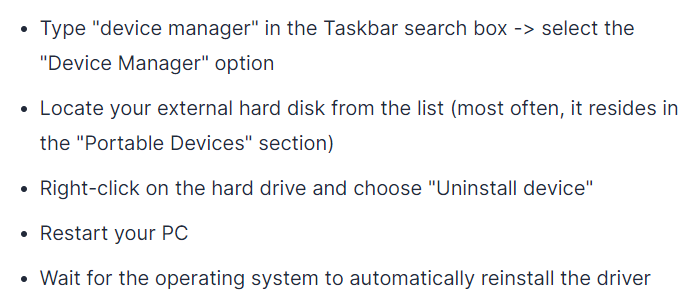
How much it costs to recover data from a physically damaged hard drive?
The average cost to recover data from crashed hard drives will vary based on the service's hourly rates, special equipment, facilities, infrastructure, the required replacement parts for hard drive crash recovery, and your desired turnover time. According to HandyRecovery, fixing physical errors (mechanical failure) on a hard drive will cost you between $500 and $3000.
Can you retrieve documents from a crashed computer?
When your hard drive crashes, it may render your entire PC inaccessible. However, an operating system crash still permits recovering data if the computer is bootable and there are no physical errors concerning the hard drive. If you want to recover files successfully, it's essential to follow a few best practices:
- You must not write any new data to the crashed hard drive.
- You must recover data as soon as possible, preventing the system from creating new files and accidentally overwriting the crashed hard disk.
- Rely on robust data recovery software.
If the crashed hard drive only has a single partition, you must use another device to download the data recovery tool. Then, you can install it on an external storage device, connect it to the affected hard drive and run the software. If you have multiple partitions on the crashed hard drive, you can download and install recovery tools on an unaffected partition to avoid overwriting any lost files.
How do I recover Windows from a crashed hard drive?
As discussed, some data recovery software can recover data from a crashed hard drive. (including Windows system files) However, such solutions can only remediate logical errors; if the hard drive suffers physical damage, the tool may be unable to read the contents on the damaged partitions, meaning it won't be able to access them. And if it can't access them, it can't recover data from the faulty HDD.
This is why it's always best to have a bootable disk image backup of your OS. An image backup will create a byte-to-byte copy of your entire hard drive, compress it, and store it on an external hard drive. Keep in mind, the disk image is typically stored as an ISO file, so you'd have to install it back on a target hard disk to browse its contents.
On the other hand, disk cloning lets you create an exact replica of your hard drive without compressing it. This enables you to browse the contents of the clone and restore it more quickly to a machine of your choosing. Nonetheless, a clone will take more storage space than a disk image, so ensure your storage devices have enough free space to work with.
How can I avoid a hard drive crash?
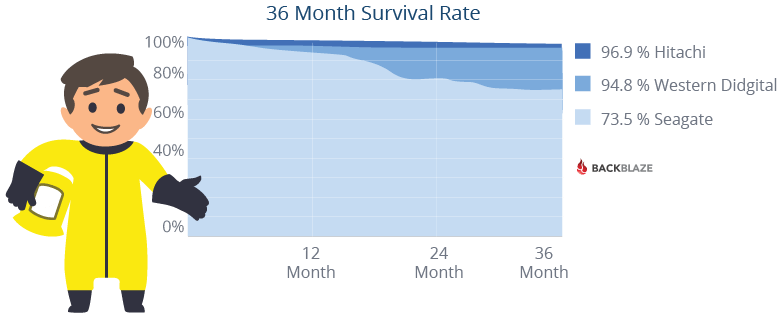
Improper handling, power surges, and even electrical storms can cause a hard drive crash. However, there are helpful methods to protect your hard drive against mechanical damage and avoid data loss.
- Do not remove your hard drive from the computer once installed.
- Do not move, shake, or jolt your computer while it is on. If you own a laptop, do not move it while it's on with the lid open.
- Keep the inside of your computer case clean.
- Make sure your fans work and that there is no excess heating.
- Avoid turning your computer on and off multiple times a day.
- Use a surge protector to avoid power interruptions.
- MOST IMPORTANTLY, BE SURE TO BACK UP YOUR SYSTEM.
Crashed hard drive data recovery software: Acronis True Image
A failed hard drive can already have broken components, suffer physical damage from excessive usage, or be unreadable due to other factors. In such cases, even the best recovery tools may fail to recover data from a corrupted hard drive.
This is why a reliable backup is the surest way to recover data following a hard drive crash. Acronis True Image protects all data on your device via full image backups for Windows, Mac, and Linux. The backups include everything on your computer system - OS, programs, apps, settings, configurations, files, folders, and boot information. In just a few clicks, you can store data backups on multiple external storage devices - external hard disk, Network-Attached Storage (NAS), network shares, and the Acronis Cloud.
You can initiate remote backups of computer and mobile devices and pilot the backup solution from an intuitive online dashboard. If your hard drive crashes, your PC suffers a virus attack, or a lost partition "erases" your data, you can restore 100% of your files quickly and efficiently to your chosen machine. Regardless of the data-loss scenario, Acronis True Image has got your data's back.
About Acronis
A Swiss company founded in Singapore in 2003, Acronis has 15 offices worldwide and employees in 50+ countries. Acronis Cyber Protect Cloud is available in 26 languages in 150 countries and is used by over 21,000 service providers to protect over 750,000 businesses.
